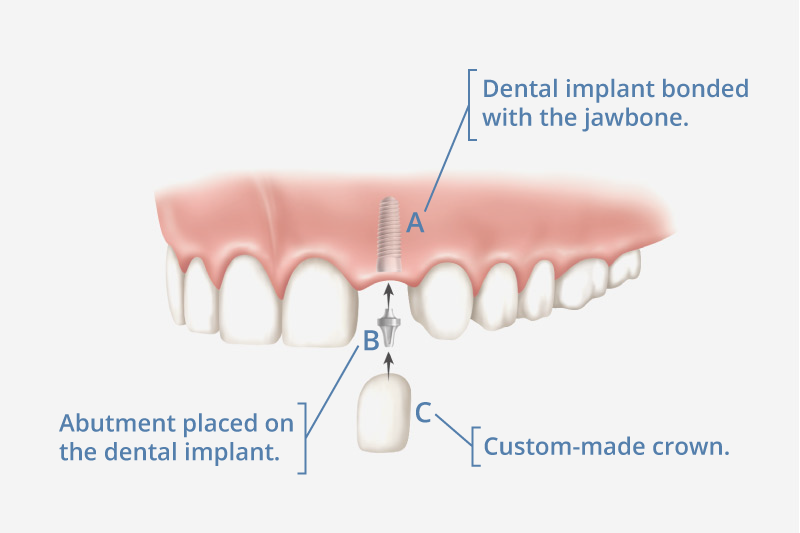Implant
Implant surgery has never been this easy. Our maxillofacial radiologists provide you with accurate quantitative and qualitative assessments of the implant sites. We also provide a precise description of the site and essential anatomical landmarks surrounding the implant site. With the information we provide, the practitioner can place implants accurately with high confidence in a short period of time while increasing the success rate.

Think of dental implants as artificial tooth roots, similar in shape to screws. When dental implants are placed in your jawbone (A), they bond with your natural bone. They become a sturdy base for supporting one or more artificial teeth, called crowns.
A connector – known as an abutment (B) – is placed on top of the dental implant to hold and support your crowns. The crowns are custom-made to match your natural teeth and fit your mouth (C).
Modern dental implants have been used successfully for over 30 years. They are the strongest devices available to support replacement teeth – and even better, they allow these new teeth to feel, look and function naturally.

Five facts about dental implants:
- Ancient dental implants have been traced back to around 600 AD, when tooth-like pieces of shell were hammered into the jaw of a Mayan woman.
- Dental implants are the only dental restoration option that preserves natural bone, actually helping to stimulate bone growth.
- In 1951, a small group of dentists who were successfully placing dental implants formed the AAID – American Academy of Implant Dentistry – to share their knowledge on the practice of implantology. AAID is the first professional organization in the world dedicated to advancing implant dentistry.
- In 1952, Swedish orthopedic surgeon P.I. Branemark discovered that titanium naturally fuses with bone, eventually switching his research focus to the mouth from the knee and hip.
- 3 million people in the United States have implants, a number that is growing by 500,000 annually.
